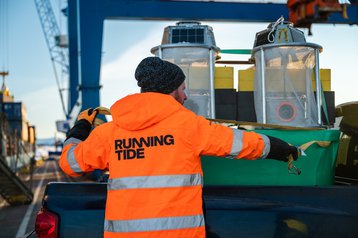Ocean carbon removal company Running Tide has shut down.
Last year, Microsoft paid to have 12,000 tons of carbon dioxide removed into the open ocean over two years in a deal worth "single-digit millions." However, Running Tide said that a lack of wider demand meant that it could no longer stay in business.
Running Tide floated buoys containing limestone, which boosts the ocean's alkalinity, and algae, which then grows and captures more carbon before sinking to the deep ocean, where gravity and water pressure hold the biomass.
The captured carbon is trapped in a slow cycle that the company claimed would keep it locked up for thousands of years.
"We did the thing. We grew oysters, we removed carbon, and we increased the world's understanding of the ocean," Running Tide said in a LinkedIn post announcing its closure.
"Unfortunately, today we are beginning the process of shutting down Running Tide’s operations because we are unable to secure the right kind of financing to continue our work with the urgency it requires."
The company claims it removed 25,416.25 tonnes (28,000 tons) of CO2 in 2023, including for Microsoft. DCD has contacted Microsoft to understand how much of its contract was fulfilled and if it plans to buy any lost capacity from other carbon capture companies.
Microsoft is the world's largest buyer of CO2 removal services.
"Ultimately, the contraction in the voluntary carbon market meant that it was impossible to scale up, and without buyers beyond the Microsoft’s of the world, there wasn’t a way to get financing for continued R&D," Running Tide said in a comment.
The company laid off its remaining staff this week. “We built incredible technologies, but the voluntary carbon market just got a lot smaller in the last nine months," CEO Marty Odlin told the Portland Press Herald. "We were building this for a growing market, and all of a sudden, it was shrinking. There isn’t enough demand right now.
“We’ve really been let down by our government. We did our jobs. We fulfilled our contracts. We brought a lot of money into the Maine economy. But this was still at research scale. This needs to be a thousand times larger at industrial scale and it’s going to take a ton of government leadership to get us there.”




